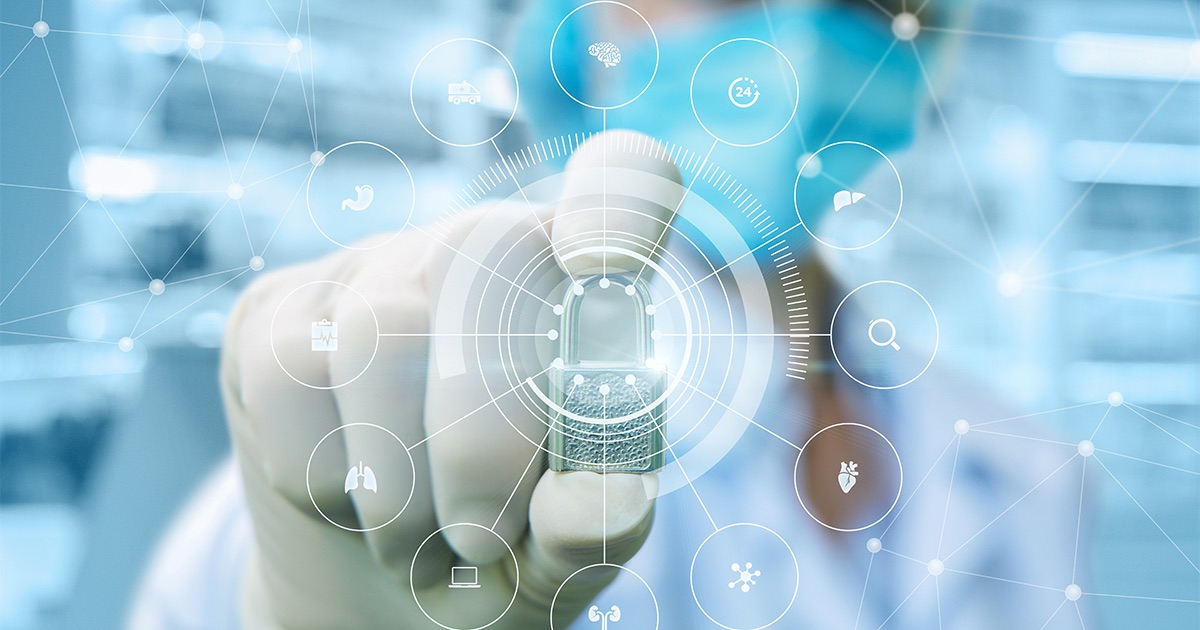
By Tom Foley, Director, Global Health Solution Strategy, Lenovo Health
Interoperability is a loaded word in the healthcare space. Mention it and people will no doubt stop to hear what is being said—but why? What makes interoperability such an issue in healthcare and what does it mean for the future of the medical community? That, not to anyone’s surprise, is also a loaded question.
 In April of 2013, the Healthcare Information and Management Systems Society (HIMSS) Board approved a definition of interoperability in healthcare, recording it as:
In April of 2013, the Healthcare Information and Management Systems Society (HIMSS) Board approved a definition of interoperability in healthcare, recording it as:
“The ability of different information technology systems and software applications to communicate, exchange data, and use the information that has been exchanged. Data exchange schema and standards should permit data to be shared across clinicians, labs, hospitals, pharmacies, and patients regardless of the application or application vendor.”
Levels of interoperability, however, range widely, often presenting huge hurdles to healthcare teams. If interoperability is achieved, it can unlock the potential of real-time, aggregated data and allow for collaborative care, while at the same time enabling mobility. However, the disjointed interoperability that is apparent in many of today’s health systems leaves much of technology’s potential unfulfilled. True interoperability is complex, but so are its associated benefits. Arien Malec writes for the CommonWell Health Alliance blog:
“So how do we define true person-centered interoperability? It’s the frictionless flow of patient information between all systems, regardless of technology or platform. The information follows the person, all of us, regardless of where care is delivered, so that the right data is electronically available for the right patient at the right time for the patient’s provider or care team. And, the entire healthcare system is securely connected electronically, with the patient’s permission, without any special effort on behalf of the user.”
Malec speaks to a point that most passionate healthcare providers can agree on—interoperability should, in the end, mean better care for patients and more efficient workflow for providers. Identity management across the continuum of care is an important component of this —if the right data is not paired with the right patient (or worse, paired with the wrong one), outcomes suffer. But in the U.S., and across the globe, interoperability standards are in flux. Today, there are several established interoperability standards including HL7, DICOM, Direct Project and clinical terminologies that enable the recording and exchange of healthcare information, such as ICD and SNOMED-CT.
The race for interoperability has incredibly high stakes, as it is necessary to take advantage of emerging healthcare trends. Case in point is the up-and-coming presence of the Internet of Things (IoT) in health environments. The promise of the IoT comes in the form of interconnectedness—the ability for different types of data to be combined into broader, more holistic pictures of patients’ health. Not to mention the ability for providers and their teams to be mobile without sacrificing data access. Without interoperability, that possibility is null and void. What good does varying technology do if providers are unable to connect the dots? Jennifer Bresnick writes for HealthITAnalytics.com:
“The problem is that EHRs contain a relatively limited proportion of the data that could be useful for generating actionable insights. Allergy lists, vital signs, and demographics are all very well, but patients are demanding more nimble reactions and deeper relationships from their providers. Clinical data is where the most successful hospitals start their analytics problems, but to deliver a higher level of consumer satisfaction, providers must know a lot more about their patients and their needs than the EHR can tell.
“The IoT can provide that data, if healthcare organizations build the infrastructure to accept it. Many providers have been able to integrate financial and utilization data to create a portrait of organizational operations, but these sources do not give a clear idea of what patients do on their own time.”
Even if new data sources were seamlessly directing data to EHRs, complications still exist. Once the data is aggregated, does the clinical team have the capability to handle all of the data? Do they have the resources to continually monitor the data? Above all else, do they want the data?
As workable standards slowly come to fruition, it becomes clear that to achieve true interoperability, more than standards will have to change. Policies and behaviors play a key role as well. Having health IT standards that further the cause is a necessary step. Only then will the industry begin to see the unleashed potential of IoT components such as heart rate monitors that can alert doctors at any sign of trouble, self-serving implantable insulin pumps, smart pill bottles, and more.
Frost & Sullivan, a research and analysis company recently completed an analysis titled “Healthcare and Medical Device Connectivity and Interoperability.” Speaking on the analysis’s findings, PR Newswire writes:
“Alliances and gateways that harness interoperability and enable information sharing between devices and health IT solutions from different vendors will go a long way in augmenting connectivity. Meanwhile, technology advances in WiFi, Bluetooth, and radio frequency identification are also stoking market advancement.”
This type of connectivity, in conjunction with the IoT, could be monumentally beneficial in many of healthcare’s settings. For example, in a patient setting, it might mean a system that can detect when a patient is awake and automatically initiate a call light. From an administrative perspective, the IoT might help to cut costs by controlling temperatures in rooms when they aren’t occupied, or automatically turning lights and TVs off when they are not in use. The possibilities are seemingly endless—and excitingly so.
The healthcare industry has a fundamental need for connected devices, collaborative health IT solutions, mobility, and the ability to successfully leverage shared data. Health IT industry leaders must continue to push for the unified support of their C-suites, innovative use of connected technologies, and the ability to create vendor-neutral IT solutions that result in person-centered interoperability. Be eager to accept the technology, yes, but in the process don’t forget about developing the right infrastructure, policies, and procedures to help it flourish.
Reference Articles:
1. “Healthcare and Medical Device Connectivity and Interoperability” Frost & Sullivan. April 23, 2015.
2. “Interoperability Among Connected Medical Devices Can Potentially Transform Healthcare” PR Newswire. May 26, 2015.
3. “Is a Culture Change Critical for Health IT Interoperability?” Health IT Interoperability. May 21, 2015.
4. “Moving Closer to True Person-Centered Interoperability” CommonWell Health Alliance. April 25, 2015.
5. “Reducing Health IT Interoperability Friction with FHI” Health IT Interoperability. May 19, 2015.
6. “What is Interoperability?” HIMSS.
7. “Why Healthcare Big Data Analytics Needs the Internet of Things” Health IT Analytics. April 20, 2015.






